On the unique BADAGA community of the Nilgiris in Southern India…their origin, language, culture and customs !!
Website of Wing commander Bellie Jayaprakash that is regularly updated and more info added
^^^^^^^^^^^^^^^^^^^^^^^^^^^
Many mistakenly claim that Badaga Origin is nothing but Badaga migration from Mysore [Karnataka state] during Tipu’s time only because of the name Badaga (meaning northerner). It is very debatable. Unfortunately many Badagas have believed it in the absence of any convincing and conclusive evidence to the contrary. But the latest revelations and links about the language, especially from the epics and writings during the Tamil Sangam period tell a totally different story (see below).
I am firmly of the view that our history is much older- may be a thousand years or more older – and my initial ‘research’ confirms that. There is a lot written about the migration from Mysore theory by many anthropologists, researchers and others. For obvious reasons, most of them are/were ‘outsiders’ – like the early European missionaries and British. The one person who has done a lot to highlight about Badagas, in the 1960s, Prof. Paul Hockings has chosen to go along with his predecessors in concluding that since Badaga means north[ner], they have migrated from southern Mysore during Tipu Sultan’s rule over Mysore to avoid being forcibly converted to Islam. Also sited in support of migration is the resemblance/similarity of Badaga (language) to Haleya [old] Kannada.
But, B.Balasubramaniam, a highly educated Badaga, [who has done extensive research before writing his book “ Paamé ” – The history and culture of the Badagas of the Nilgiris ] feels that Badagas migrated from Southern Karnataka [then Mysore State] about 700 years back, much before Tipu’s time, around 1311 AD during the plundering raid of Malik Kafir.
Though I am in agreement with Bala that Badaga migration, if at all, took place much earlier then Tipu’s time in late 1700s, I am firmly of the view that “It is possible that Badagas have lived in the Nilgiris for thousands(?) of years like the Thodas [Thodhamaru ] or Kothas [Kotharu]. Migration theory is an attempt by historians and anthropologists to explain away a ‘historical puzzle’. Based on the name ‘Badaga’ or on the so called ‘legends‘ that are open to many interpretations or on the basis of similarity of Badaga [language] with haliya /mid Kannada, can we conclude that Badagas migrated from Southern Mysore? Now it has been proved that Badaga is an unique and separate language ( Christiane Raichoor Pilot)
Badaga language not a dialect of Kannada, claims French linguistic scholar
Shanta Thiagarajan, TNN Dec 4, 2012,
According to her research paper published recently in the Encyclopedia of Nilgiris, edited by international anthropologist Paul Hockings, a professor in the United States, there are evident, but isolated and non-systematic coincidences between Badaga and Alu Kurumba.
Hence, the four traditional communities of the Nilgiris, Todas, Kotas, Alu Kurumbas and Badagas retain their morphology and categorical distinctions, some very archaic features, which give them an overall grammatical homogeneity, according to her. It is evident from her research that the Badaga community was created in the Nilgiris with small local groups in ancient times. LACITO in Paris houses numerous varieties of Badaga stories and songs collected over the past two decades by Pilot-Raichoor.
~~~~~~~~~~~~~~~~~
Badaga Origin
In an article published as The Tamils and the Andhras, PANDIT M. RAGHAVA AIYANGAR says Badaga Language existed with old Kannada and equated it with Sangam or Purana Tamil period
There is also an interesting article here about Badaga (Vaduga) connection by R. SESHADRI-AIYANGAR
Also see Badaga Language page
When there is no definite evidence about the origin of Todhas or Kothas, how can we presume that they predated Badagas as natives of the Nilgiris?
I am sure the mystery of migration is far from over. If you look at the issue as of ‘definitive migration’ then you try to guess about the dates but what happens if we believe that Badagas have always been there in the Nilgiris much before or along with Todhas or Kothas? Uncomfortable questions that are very interesting and worth digging deeper into.
But given the diversity and the highly commendable unity and uniformity, with minor changes in their customs, Badaga Migration, in all probability, has taken place only within the Nilgiris Hills, reverently called ‘Naakku Betta’ by the Badagas, when the population increased.
Discover more from Badagas of the Blue Mountains
Subscribe to get the latest posts to your email.










 Mookuthi
Mookuthi  Chinna
Chinna 






 ==
==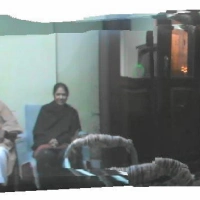
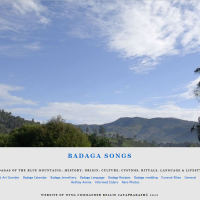
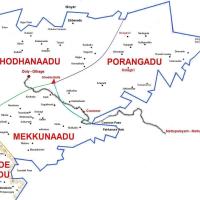
![Seemae [See'may] & Morae [Mo'ray] (relationship)](https://i0.wp.com/badaga.wordpress.com/files/2008/11/nakku-betta1.jpg?resize=200%2C200)
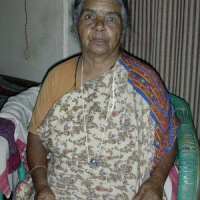






































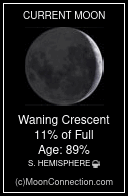

Anna nice to read this website on Badugas. I am planning to work on this project can I take some
of your help .Let me know.
LikeLike
Here origin says we are indigenous, but the Heathey Habba history says otherwise. So which is actually true??
LikeLike
I am an Okkaliga gowda, here in Tamil Nadu. My community is considered minority and used to be called as Kannadigas even by my own community people who originated from Karnataka and migrated in Tipu’s period.
I heard that Okkaliga and Baduga are same…..meaning of both is farmers….getting confused…..if possible share some clarity on the same, but I love both Badaga and Okkaliga lot due to their lovable culture.
LikeLike
Wow No wonder, Badagas are Kannadigas (Kanarese). Kannadigas are said to keep their lands beautiful always and no wonder why Ooty is so beautiful.
As far as Puranas are concerned, Badagas never migrated to Ooty from anywhere, neither from Mysore in Tipu’s period nor 700 years ago. But the truth is, Badagas always belonged to Ooty (previously Otacamandala) since thousands of years and was attached to Royal Mysore region of Kannadigas right from the beginning. This was then annexed to Tamilnadu by the British as a gratitude to tamils’ slavery for them.
LikeLike
Was any link with Vadukar community of Palakkad district in Kerala State?
Badaga and Vaduka community are same or different communites?
Perhaps if any relationship between this two, any one can share the details of evidence?
LikeLike
All my wishes. Badugas are the most lovable persons that one can accompany in ones life. I’ve never heared such a question from a girl. The community- the only tribes with perplexing growth in education and in economy has not given room to any cultural upgrades. Most of the inter caste marriages are outcasted.
LikeLike
I am Tamil, in love with a Badaga. Is there anyway to get converted to Badaga?
LikeLike
Sadly the answer is NO. Baduga dont allow for intercaste
LikeLike
There are brahmin communities in both old-mysore, bangalore, and hampi karnataka regions known as ‘badaganadu’ community. They mostly speak kannada or telugu and are advaitin brahmins. Are they in any way conneted with BADAGA being talked about here? [ Link: http://en.wikipedia.org/wiki/Badaganadu ]
LikeLike
Hello Badagas, follow rules and regulations.
LikeLike
Nice website for our Badagas, give more information
LikeLike
Hats off to you 🙂 this website will be very informative to the younger generation to know about our precious culture and also about our origin. Thank you very much for maintaining this wonderful website.
LikeLike
Hello there, just became aware of your blog through Google, and found that it is truly informative. I’m gonna watch out for brussels. I’ll be grateful if you continue this in future. Numerous people will be benefited from your writing. Cheers!
LikeLike
The misconceptions about the origin of the Badugu Jathi is really hurting me. We are known as Baduguru by all the other indigenous communities who admire us for our progress and cultural tapestry that we share with them.
Evidences are plenty to show that we are indigenous to the Nilgiris. Deve sole’ (Sacred Groves) are an important aspect of our culture. Who will share their deities and festivals with us if we have come from elsewhere? Who will participate in our rituals if we are not part of this land? We need to reinforce our origin with as much cultural evidence to reverse the misconception that we have migrated from Mysore.
This is basically because of the written evidences created by researchers of Nilgiris.
LikeLike
Now I am in Doha [nivasbhojan@ymail.com] …i am new to this place…I would like to find our community people in Doha……..I proud to be a badaga, working with marriott intr…
LikeLike
good article…….. i am from manickal village in kundae seemae….. i came to know new things thanks for the information
LikeLike
Your doing a good job Jaypee….Go ahead….I’m also doing a project on the same..Will keep you posted once i’m done with that…..
LikeLike
Websight nodithe, appara sandhosha. Nanga culturedhoge esago evidence buttubutti. Nanga heththappa kadaisiya bandhadhu Mysoreintha. Originala nanga Mysoreavakka alla.
With evideneoda hegine. Example Dhevwa Habba? Kothu Mande pattu? kivi sinna ? Serappanige? Kokkedhadi ? Belli Ungara? Nethiga haakko Asalu? Ogemane Design? Madhilumele Dheevige? Etc
LikeLike
Hi mukesh,
Can you explain about the origin concept since its been a mystery how actually we arrived in the Nilgiris? You mean to say you have evidence, can you share , will be very helpful….
LikeLike
I’m from muttinad village … I just visited this website and I’m really surprised…. I really got a lot of information about my own culture…. I’m really proud to be a Baduga….. thanks a lot for this website…..
LikeLike
I am from NANJANAD village. I am a B.E. student pursuing my final year. I saw your website on BADAGA society it is amazing. We do’nt know any history of our community. So thanks for creating a wonderful site
LikeLike
Badaga is a dialect of Kannada. In the influence of a little change is there. Whatever you have I can understand.
Feel good to know about Badagas.
Badaga is an independent language though it may resemble halia(old) Kannada more than any other Dravidian language – Wg CDR JP
LikeLike
I am from Bearhatty Village ,just now I saw the website which you have created, it was amazing to see the Badaga’s ancient life. I am pursuing my Engineering degree in Computer Science in Vidyaa Vikas
LikeLike
Hey amazing work guys! I never knew soooo much about my community!! But now I got to know the gist of our community…..you’ll are doing an extraodinary job!!!keep it up…expecting more! PROUD TO BE A BADAGA ! Check out the below link. This is a song composed JLT for fun, which we thought turned out to be good. Would appreciate positive comments. It is a Badaga Song, lyrics just poured out of our hearts with Devdass Nithin and Akash started playing a lead for the same which Vinith sang with the tune and here is the product 😉 Cheers Badagas!!!Ooty Rocks!!! \m/
http://www.youtube.com/watch?v=oFsMn5n0wXo&playnext_from=TL&videos=Edo0K1vp51Q
LikeLike
I am N.Ramgopal aged 71 yrs and living in Bangalore. I was a student of Rao Bahadur Bellie Gowder Board High School from 1951-1954. I completed my S.S.L.C. public exam in 1954. My Father was working in Cordite Factory , Aravankadu. I always remember my school days. I have retired from Bharath Electronics, Bangalore. In fact I want to visit my school and Hubbathalai . Will it be covenient for you to send photos of the school building ( Main building and the one on top of another hill ) and Sri. Bellie Gowder. Today (28/6/2010) I searched in Google and found your site. I had Badaga friends and teachers. The site is simply great. I am always recollecting the beauty of Aravankadu and Hubbathalai. I use to walk from our quarters outside the main entrance of Cordite Factory (on the way to Jagadala) to the school through railway track, claimbing steps on the hill.
LikeLike
This is my second visit to this website and very happy to read this article on the origin of our community. I’ve heard my maternal uncle subscribing to the “Migration from Mysore” theory and this is the first time I’m reading an article having a different perspective on our community’s origin. I sincerely hope that if this research is carried forward, we can discover startling facts about our community. Thanks to the administrator for maintaining this site. Uri hogi, Siri barili.
LikeLike
Dear Sir,
I visited Nilgiris recently and was starting to wonder about Badagas and Thodas.
Having seen your website about Badagas, here is my few cents on their origin.
To start with and to be frank I did not know much about Badaga culture except for the fact that they are unlike general “hill people” that one could see. That is, I was aware that Badagas were much more advanced in culture and civilization (should not misunderstand that hill people are of less culture; I am just trying to contrast two different things and hence nothing is inferior here) than normal tribal population. Now that I am trying to understand the origins of Badagas, my theory will be as below.
Of course I am just guessing and have no scientific or scholarly basis for my statement. You can call it a conjecture but based on what I see about Badagas.
My take is that Badagas were both the people of plains and of the hill and have always been like that. I am not so convinced with the theory of “migration” into the hills by Badagas. No advanced culture (as that of Badaga) migrates to forest and into difficult lands when threatened. They either modify their culture when there is an invasion or a drought or they migrate to other lands which can yield good produce. No civilization goes into forest land. The best they do is they will return back when the threat subsides.
In Badaga case, I am not taking this theory of Badagas moving into Nilgiris from plains to “start” a culture for a simple reason that a culture like that of Badagas who have developed their unique lifestyle, religious identity (inside the fold of Hinduism), commerce and other advanced social aspects would not “move” or “migrate” into a difficult terrain when there is a problem.
Hence the crux of my theory (or should I call it a guess) is that Badagas, when faced with a tumultuous Muslim invasion (maybe more than once) just moved from the plains to their relatives in the hills. Since Badagas were a chain of people from the plains to the hills, once they joined with their relatives in Nilgiris, they did not have a reason for coming back again to the plains. Maybe ancient Badagas felt comfortable and safe to carry on their culture and religion without problems in the misty hills.
Here when I say multiple invasions, my guess is that, Badagas of the plains (when I say plains, it does not mean a pure plains near rivers but the land just below the hills) started moving upwards first from the eastern side (Tamilnadu side) around 14th century on account of Malikafur’s romp into Tamilnadu and in 18th centure, from Western side due to Deccan and Mysore Sultanates.
Here I am also taking the liberty of guessing that all along Badagas of the plains and that of the hills had marriage and other alliance’s going on continuously!
As I am writing this, I should confess I know nothing about any caste system or any division inside the Badaga community. I am not even aware about the social structure of the Badagas.
Being the case, I am guessing that there might be a division of hierarchy based on maternal side. The reason is that Badagas if indeed were the people of both Hills and plains as I am guessing, then the hill Badagas will take their women from the Badagas of the plains as a matter of inheriting and sustaining the culture which naturally any people of hill will feel as a pocession of the people of plains that are nearer to other centers of civilization and particularly nearer to renowned Hindu centers.
Hence my guess is that Maternal side of Badagas will have a higher status than the paternal. Again, I may not be correct at all and could be seen as someone who is throwing out wild statements. I do not deny that and I agree I could be 100% wrong. But based on what I see about Badagas as a continuance of a flourishing Hindu civilization which is the only strong connecting point I have now (since I have not read anything scholarly on Badagas yet), I think I may be a bit correct in my assertion that Badagas are indeed original inhabitants of Nilgiris along with Todas.
My guess again is that, when I say the hill Badagas, they probably were the caretakers of the estates of the plain Badagas, giving royalties and produces and having a constant relationship. As I said earlier, the plain Badagas may have strengthened their bond with their relations in the hills by giving their daughters in marriage to them. This may have helped in two ways. One as said earlier, the hill Badagas have one in their family a representative of their kinsmen from plains who have been tutored on main aspects of Hindu-Badaga culture and the plains men in return will have sustained their bond with their brothers uphill.
That is why, I feel Badaga community and folks never really look like “tribal” ones (again, I do not mean anything bad when I say tribal. I am using that just to indicate a community’s distance from prevailing mainstream civilization aspects. No other intention please) rather they seem to be as good a torch bearer of Hindu civilization as any other Indian community.
Hence in short, Badagas I feel were indeed a original inhabitants of the hills and also the plains. My take is 20% Hills and balance plains about six hundred years ago. This changed slowly and by 18th and 19th century it almost became 100%. The remaining ones in the plains might have relinquished their Badaga status and might have “converted” themselves into other castes or communities (this is because Indian castes are not constant as it is made to believe. Historically caste and communities of India have continuously dispersed, regrouped, changed and consolidated based on the prevailing political situation) and might have also “merged” into other castes and communities. That’s why I feel one might not find a full fledged Badaga in the plains (I might be wrong on this).
Again I wish to reiterate that I might be completely wrong. I confess again that my assertions are based only on conjectures and my personal opinion only.
If my so called “theory” looks like nonsense, please ignore. I do not intend in anyway to impart legitimacy to my unsupported “conjunctures”!! It is just that I some thoughts came to me while I drove back from Ooty and I also happened to see your website and hence decided to throw my few thoughts.
LikeLike
Its really good to see our website with tons of historic information.Its really informative for youngsters like me to know our community well.Thank you.
LikeLike
Yellaga yenna nandri samarpanam madinae…I’m too sensitive in terms of community. I feel proud to be Badaga..
I couldn’t find the book “Paamé’ – by Bala..Plz somone help me where I can find..I’ll be thankful
Everyone from Baduga community should praise Wg Cdr Bellie Jayprakash Gowder for maintaining such a website. These type of measures will not lead in future to doubt that there is any community called Badaga…
LikeLike
I am visiting first time to this site. Learning rare info…about our community well …after the death of my ayya[grandfather], this site made me feel his absence who said many things when he was alive.
Its geart effort by you, sir.Today onwards this will be my homepage. In my schooling days I tried to know more about our community which I used to listen 15 mts before going to bed ..yes..its my ayya, who fed through stories about tipu sultan and his kingdom, is no more now .And I hope this site will fulfill my ayya’s place….thanks sir..
singara seeme enthendigu singaratha!!!!
LikeLike
3 Cheers.”Hip Hip Hurray”! Proud being a Badaga
LikeLike
Hi sir, First of all, Hats off to your work.I am a regular visitor of this site for the past 2 yrs.Every day its looks new to me..I spend atleast 15 min a day.Nice to see it crossing 1 lakh visitors.Proud to be a Badaga..Hope our community stays for ever.
LikeLike
This is my first visit to this site and was surprised to know how ignorant I have been about the Badaga community.All that I have read makes me hang my head in shame for I have been growing up in the Nilgiris , among the Badagas and I was so ignorant about their origin,culture and so on. This write up is very informative and useful and may the Badaga community grow and spread through the whole world and prosper.
LikeLike
This is my 1st visit to this site and you guys have proved badagas are really great ‘n rocking…and made each ‘n every badga feel proud..keep going.. its a fantastic job…good luck
LikeLike
I am in Doha, Qutar (UAE). I am proud to be a Badaga [where ever in the world].
LikeLike
Why are Badaga community people against inter caste marriage?
LikeLike
i am looking for the history of our community.
LikeLike
Badagas Have almost turned tamilians now.they are more of tamilians in their ways as I encountered in my stay in Coimbatore
LikeLike
I have couple of Badaga friends and always wanted to know their orgin and history as the language they speak ( with all due respect) is a combination of couple of south Indian languages( at least sounds like).
I have also heard about the marriage system. The way how Badgas dont marry any one from outside.
If you could give me some more information about the tradition , culture, food habits and what ever you feel is important to know more about the Badga community that would be most helpful.
LikeLike
Quite impressive. Having lived in the Nilgiris throughout my childhood and having had quite a few Badaga friends ,I had a sense of nostalgia reading the articles.I would like to get in touch with my school mates (Stanes, Coonoor) (1973 batch)
Ramesh.Rao@in.unisys.com
LikeLike
Mrs.Indu should be an ardrent reader of english books her language shows her class.
She maintains our tradition in a novel way (thru english)
LikeLike
Ms.Indu Mallah’s poems are beautiful, I could feel some sadness in them. Scapegoat and A woman’s tears touched my heart.
LikeLike
Being a badaga I had never bothererd to know my history…until I came across this website… im kinda ashamed..!Thanks to the administrator of this site, I now got a gist of it..Itz a wonderful site..keep up the good work.
LikeLike